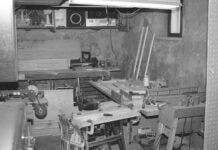A common question on the minds of potential builders is what kind of tools will they need to complete a kit-airplane project. A potential builder recently asked me a variation of the topic in the form of what my “favorite” build tools were. This got me thinking. There is a nuanced difference between “recommended” and “required” on the subject of tools, and “favorite” is different still. Some tools are only needed a time or two and, while cherished at the moment, aren’t particularly satisfying to own. Some you use every day.
The query started me composing a list. My criteria for the list were tools that I would consider essential to my next build. Others are just favorites that have earned affection from satisfying usage.
This list is not intended to be complete. It is not everything that one must use throughout a project, just my personal favorites. Because of my experience, the list is oriented in some respects to the conventional riveted-aluminum projects that dominate the market. Obviously, a wood, composite or tube-and-fabric project, all of which I am considering for my next project, would be different.
Any list by any composer will be subjective. I fully expect experienced builders to agree with most of my list, but to also have significant differences in their own such lists. None of these selections are original thinking on my part; they are mostly inspired by recommendations from others.
The list contains products that range from over $700 to free. Some are niche products to the E/A-B marketplace and others are common household or hardware store products. If appropriate, I will reference the Aircraft Spruce and Specialty Co. 2021–2022 catalog (“Spruce” for brevity) as a source for applicable products, but many of them are available from multiple sources. After considering several ways to order the list, I decided to construct the list in order of expected price from most to least. Let’s begin.
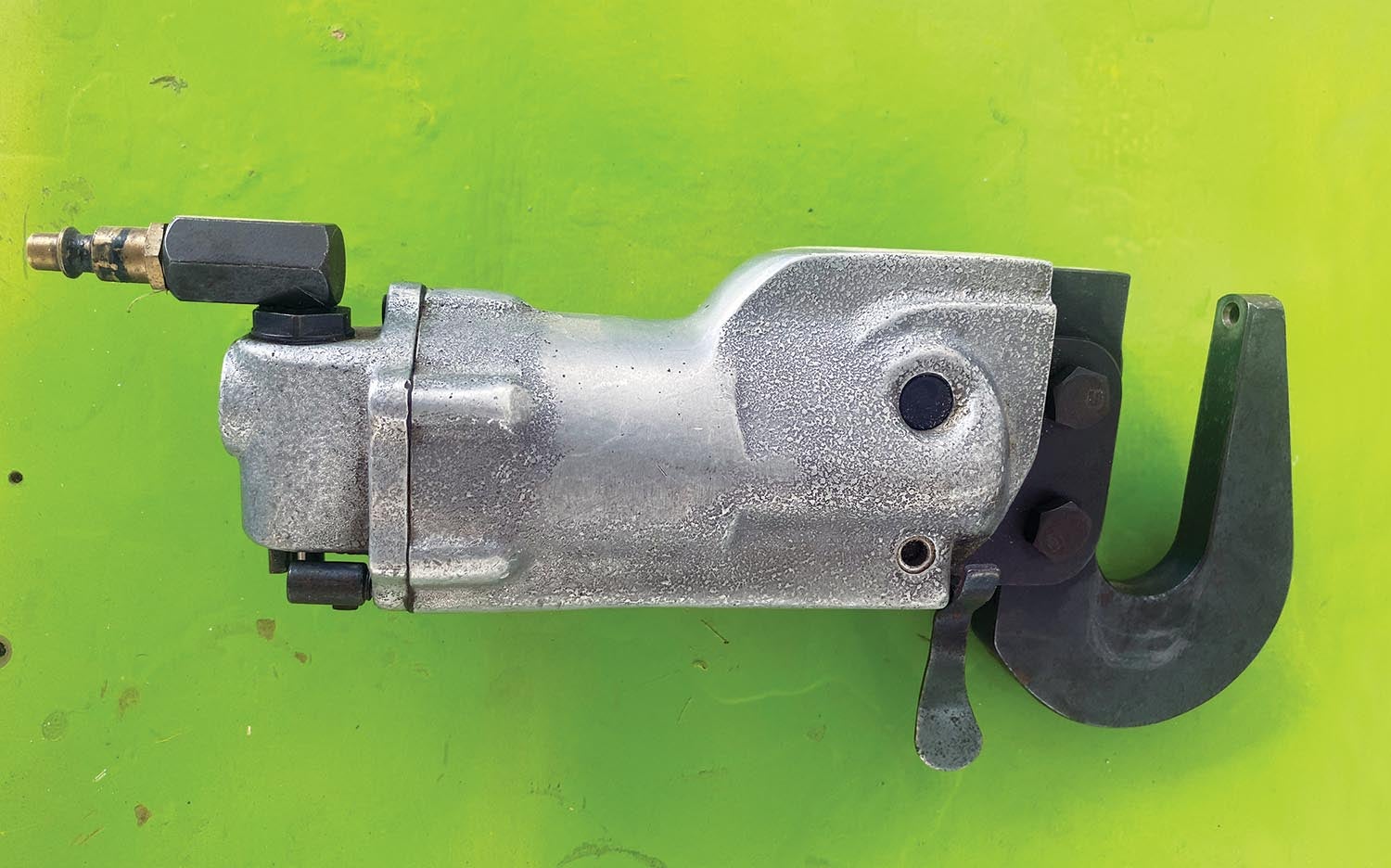
1. Pneumatic C Squeezer Kit
Available from Spruce, p/n 12-03504 ($700–$800 including required yokes and dies). There are a few versions and brands of these tools, but overall, owning one is a joy for builders of conventional riveted-metal projects. There is a learning curve to setting it up and using it properly, but builders have thousands of opportunities to get proficient with it. Can also be used as a convenient dimpler in certain situations. Often included or optional in specialized tool packages. Not cheap, nor required, but will be highly cherished by builders who value efficient, uniform and essentially error-free production.
2. DRDT-2 Rivet Dimpler
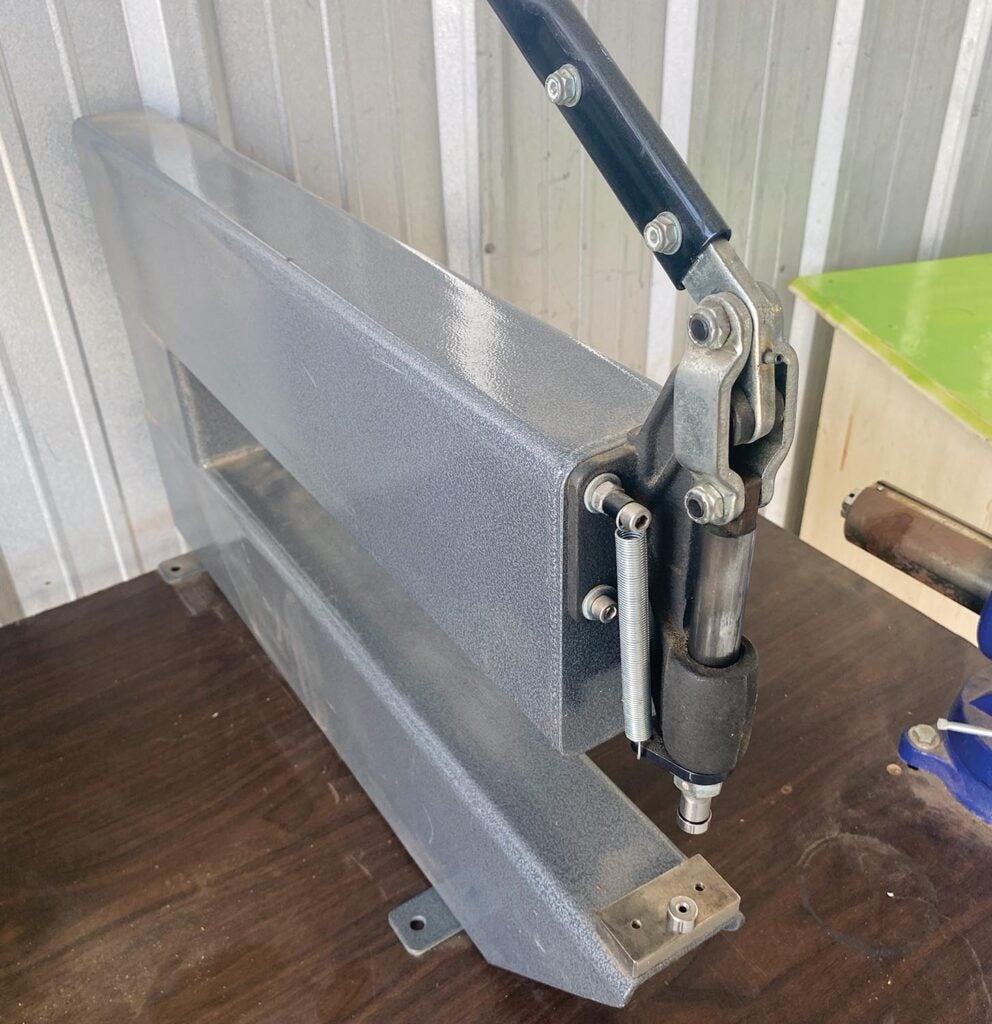
Available from Spruce, p/n 12-00907 ($545). These are considered the gold standard of dimpling and are far superior to the noisy manual hammer-driven setups they replaced. Often found in factory prototype shops and even certified factories. Easy to set up and use. Very well built and durable. Requires conventional dimple die sets. Like the pneumatic squeezer, the appliance is conducive to efficient and uniform production. Often included or optional in specialized tool packages. Can be found for sale used occasionally, but hold their value well. A must for flush-rivet metal kit builders.
3. Mobile 74-Bin Double-Sided Floor Rack
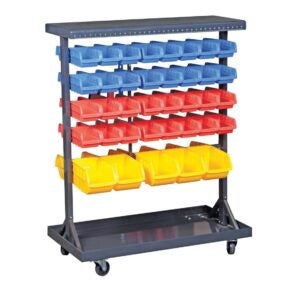
Available from Harbor Freight ($169.99). Some might say that parts organizers aren’t tools, but I disagree. To me, a tool is any shop accoutrement that contributes to the success of a project and this getup is a huge favorite. The easily removable smaller bins are perfect for sorting all the high-volume rivets and other hardware that come in various sizes and need to be kept separated. The bins are easy to label by part number and carry to the rivet table when it’s time to bang. Other bins are the perfect size for the famous Van’s brown paper bags stored in numerical order for easy retrieval. Still larger bins store myriad boutique parts and specialty tools, sealants and so on. A wonderful addition to any workshop that is near perfect for kit building.
4. 3M Scotch-Brite Deburring Wheel Apparatus
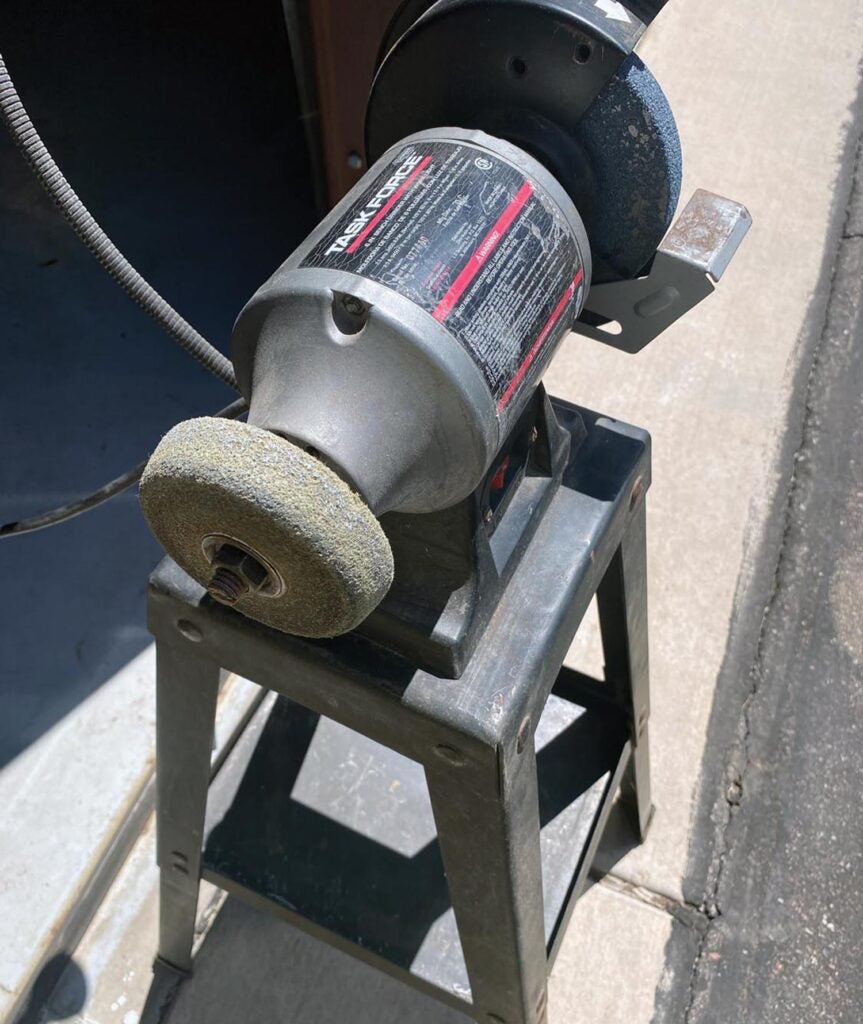
Available from Spruce, p/n 09-05641 ($61.75) plus a half-inch flange adapter kit, p/n 12-01585 ($7.50). Next stop we go to the aviation aisle at Harbor Freight Tools. We need a basic no-frills 6-inch bench grinder ($50 or so) plus the universal bench grinder stand ($35). The combined assembly forms what will be one of the most heavily used components in any builder’s shop. Every single structural part of a metal kit gets cleaned up on the wheel, which in itself just gets better with use as the outer edge erodes to a more versatile angle for larger pieces. Worth every penny and knuckle burn.
5. Labelworks LW-PX350 Label Printer
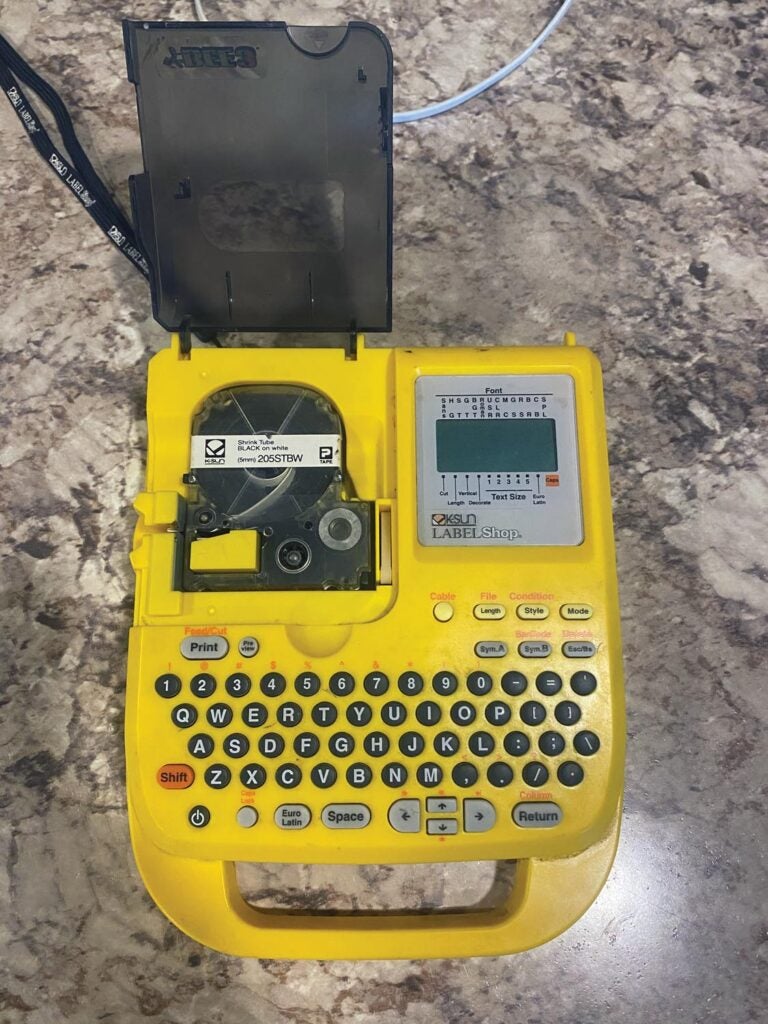
Available from Spruce, p/n 11-15517 ($129). Previously sold as a Bee3 by KSun. The beauty of this gadget is that in addition to normal flat labels, this unit also imprints on what the vendors call “shrink tube.” The labels and tubes come in cartridges of various sizes and, while a bit pricey at about $30 each, are very handy. The printer is easy to learn to use and immensely useful for wiring. The first time someone has to do some electrical troubleshooting, the value of diligent labeling becomes readily apparent. The biggest downside to owning one of these is that word gets out that you have it, and a steady stream of friends new and old come out of the tarmac wanting to borrow it. After the airplane build, I have used this device for many other household and vehicular projects.
6. Ratcheting Wire Terminal Crimper
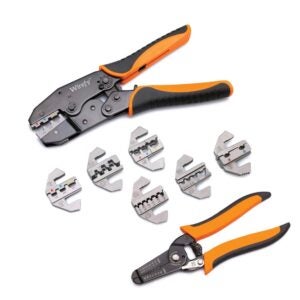
Widely available (around $100). A high-quality ratcheting crimper with interchangeable die sets is essential. Popular die sets for kit builders are insulated terminal, open barrel and coax. Good brands to shop for are Pro’s Kit and Wirefy. Electrical work is one area where cheap tools are a waste of time and money.
7. Adel Clamp Pliers and Awl
Available from Spruce, Amazon or Wicks ($37.50). Adel clamps are those circular padded clamps used extensively, especially firewall forward. They are a necessity for what they do, but they can be challenging to install. We’ve all fought getting the wire bundle positioned and the retaining bolt installed properly, especially when combining two clamps as part of an assembly.
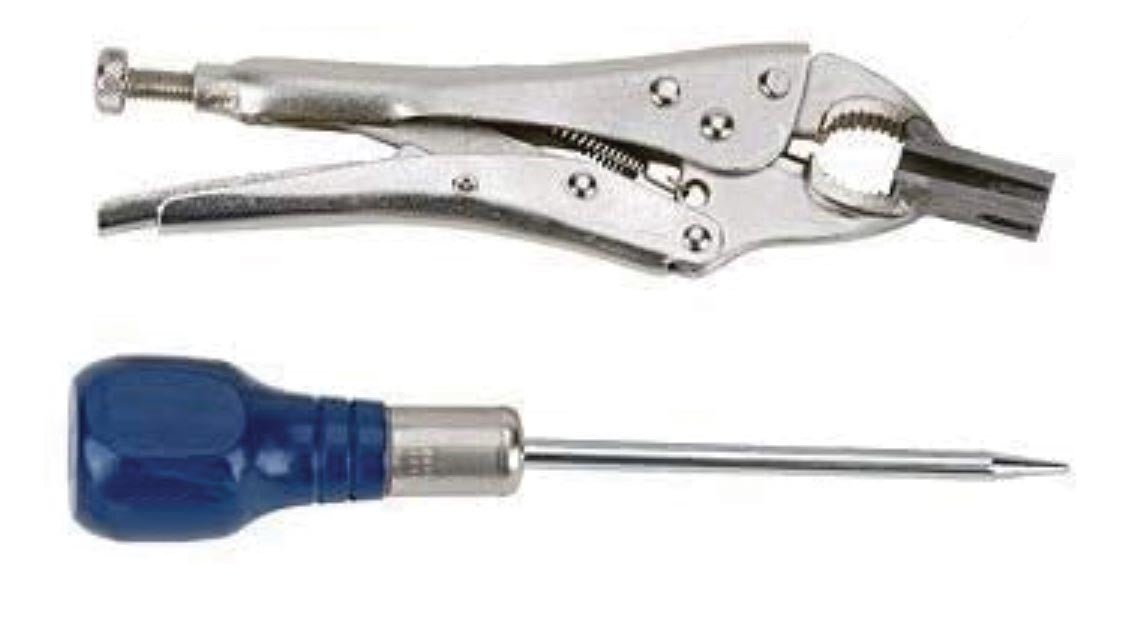
This tool package consists of a modified pair of Vise-Grip pliers to clamp the assembly together and hold it so that the awl can then align it all up with the bolt until the builder can get the nut installed to hold it all together. (Sometimes it’s easier to do it in reverse: String the clamps together on the awl and then tighten with the Vise-Grips pliers.)
To fully appreciate the tool, just try to get one of the Adel clamps installed without it. It won’t be the most heavily used tool in your shop, but it’s well worth the money if only to keep those dollar bills out of the swear jar. (Yes I am aware of the safety wire trick, and have tried it, but for the small investment, I really appreciated this handy tool combo.)
8. Long Nose Aviation Snips
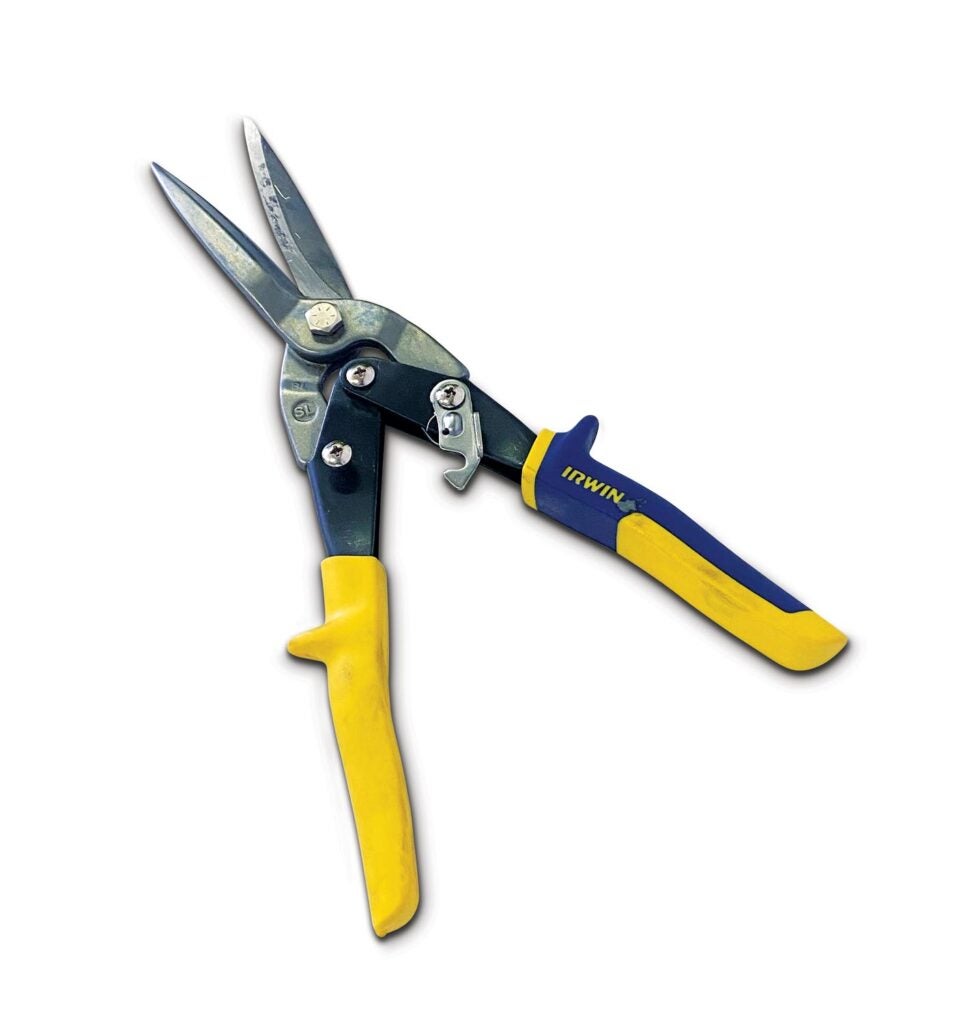
Widely available (around $17). I like Irwin’s 21304ZR. My first pair of these snips came with a starter tool kit along with a traditional trio of short-nosed aviation snips, but I found that I used the long-nose shears more than all the others combined. I like them so much I now own four pairs to keep one in each toolbox plus my road kit.
9. Stainless Steel 6-inch Pocket Ruler
Available from Amazon and other sources ($2.99). These get used a bunch and tend to wander off, so consider a four-pack. A pocket clip also serves as a height/depth gauge, which is handy for laying out rivet lines.
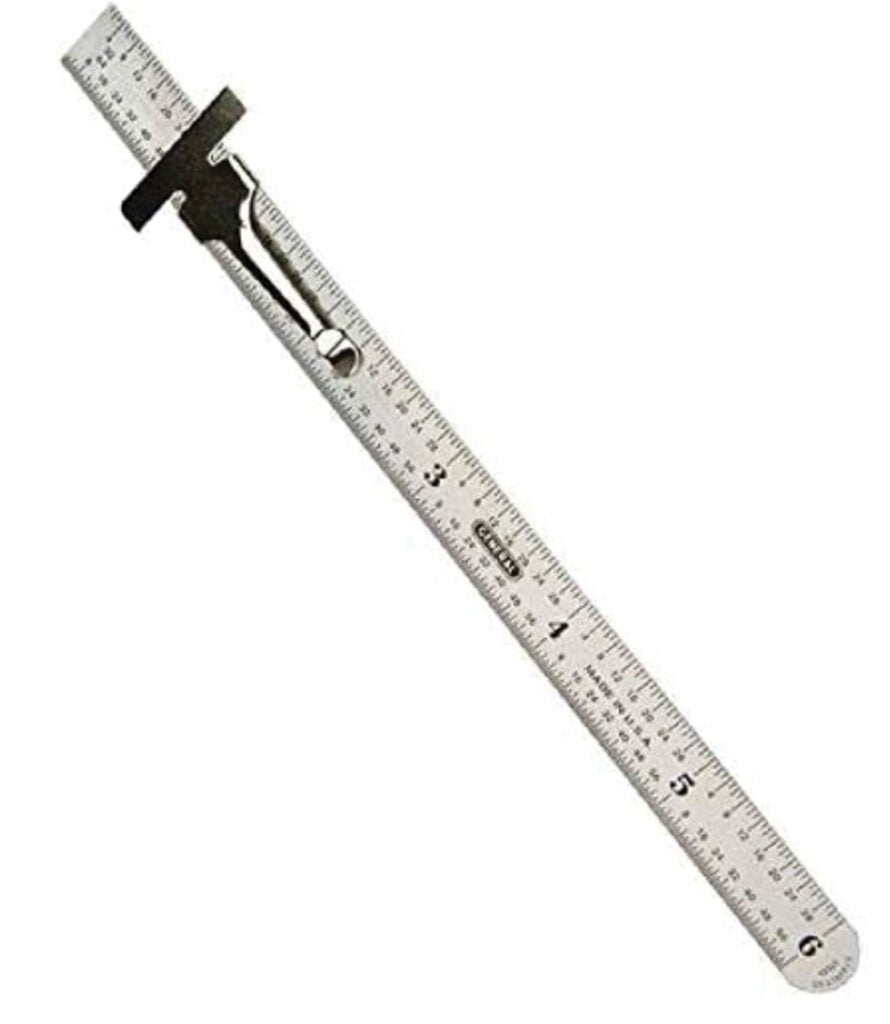
handy and extensively used in kit building. High quality is a must and can be had for little money. Frustrating when needed and can’t be found so buy several.
These are available in standard, metric and combo. Just make sure you know what you have when using it. Absolutely indispensable to kit building.
10. Coroplast Corrugated Plastic Sheet
Available from Home Depot ($29.98 for a 4×8-foot sheet). Also known as “plastic cardboard,” this product is tremendously useful for many tasks in the workshop. Easily cut to whatever size needed, especially by the snips referenced above. It can be used as a worktable cushioned pad and/or an overspray mat for priming and painting parts. When freestyle fabricating a center console for my project I used this material to easily and cheaply experiment with building a conceptual prototype to refine the design before actually fabricating the final assembly.

The product also makes a nice mat to use when laying down on the ground or dirty floor whenever the project requires. Hands down, however, my favorite use of this material is as a nonabsorbent platform on which to wet out sections of fiberglass cloth, a use for which it excels.
If all of the above isn’t motivation enough, the final kicker might be the fact that this product is the same material that is often used for political signs and such. Therefore political candidates are anxious to give you various sizes of the product for free and any morning after an election, any community corner will have several years’ worth for the taking (check local regulations first).
Compiling this list has been enjoyable and retrospective, so much so that I plan on compiling a similar list for maintenance tools. Tools are best when used and enjoyed.










